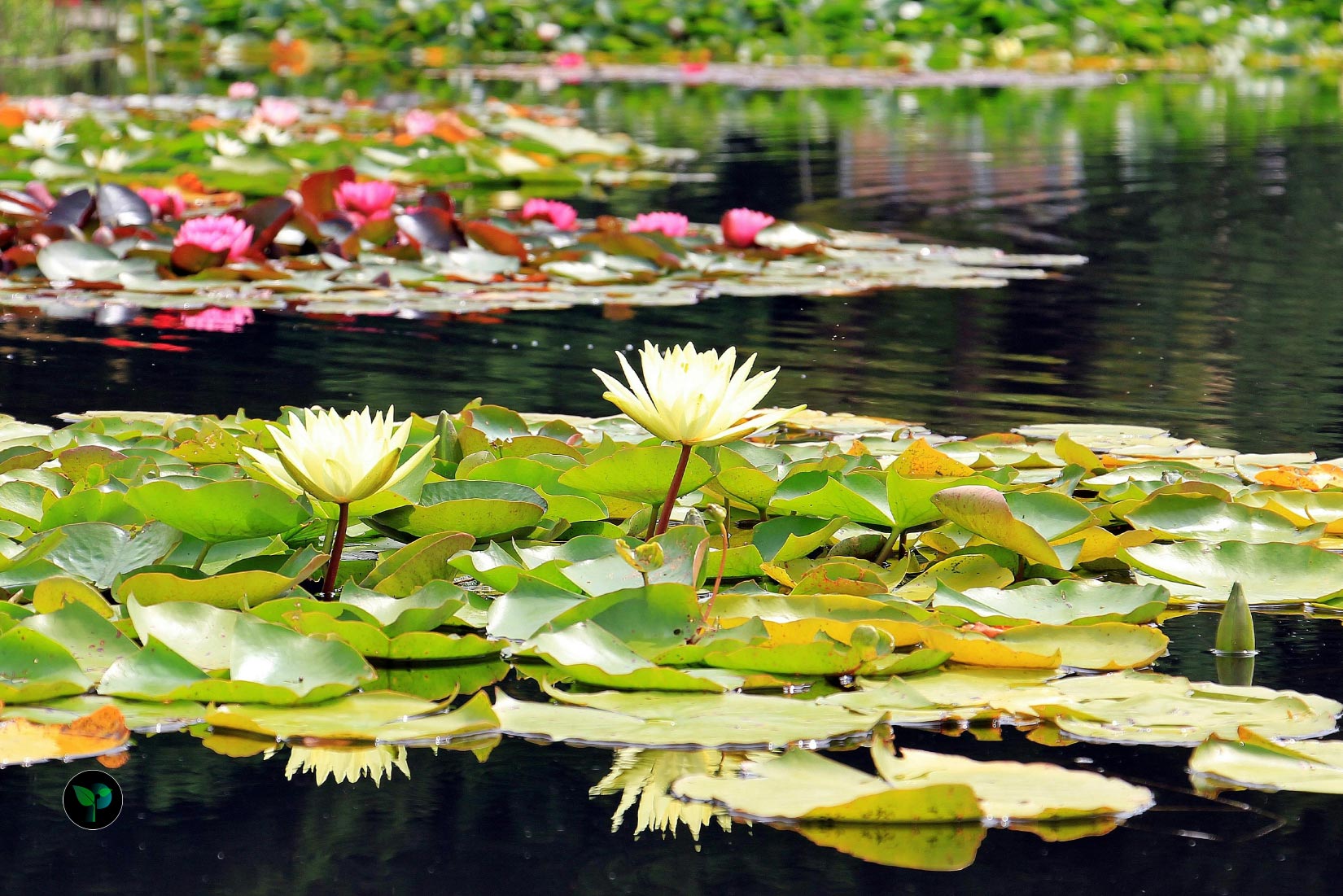Welcome to Plants Folder, your go-to destination for all things green and vibrant! Today, we dive into the fascinating world of aquatic plants. From serene ponds to majestic rivers, these submerged wonders bring life and beauty to aquatic ecosystems worldwide. Join us as we explore the benefits, diversity, and wonder of aquatic plants, and discover why they’re crucial for the health and balance of our aquatic environments. Let’s dive in together and unravel the mysteries of these captivating underwater flora!
What are aquatic plants?
Aquatic plants are plants that have adapted to live in water or water-logged environments. These plants have developed special adaptations to thrive in aquatic habitats, such as lakes, ponds, rivers, streams, and wetlands. Here are some key features and adaptations of aquatic plants:

Root Systems
These plants may have specialized root systems to anchor them in the substrate or absorb nutrients from the water. Some aquatic plants have roots that float freely in the water.
Leaf Adaptations
These plants have leaves that are adapted to survive in water. For example, they may have air-filled tissues to help them float or leaves with a waxy coating to repel water.
Photosynthesis
Since light can be limited in aquatic environments, aquatic plants have adapted to efficiently capture and use available light for photosynthesis. Some aquatic plants have floating leaves to maximize exposure to sunlight.
Reproduction of aquatic plants
They have various strategies for reproduction, including producing seeds, and spores, or sending out runners to form new plants.
Oxygen Adaptations
They have developed ways to obtain oxygen underwater. They can absorb oxygen through their leaves, roots, or specialized tissues.
Nutrient Uptake
Aquatic plants have adapted to absorb nutrients from the water or sediment around them. Some aquatic plants have specialized structures to enhance nutrient uptake.
What are popular aquatic plants?
They are not only beautiful additions to aquariums but also serve important roles in aquatic ecosystems by providing oxygen, shelter, and food for aquatic animals. Here are some popular aquatic plants you might consider adding to your aquarium:
1. Java Fern (Microsorum pteropus):
Description: This plant has distinctive green, leathery leaves that grow in a rosette pattern.
Care: Java Fern is quite hardy and can thrive in various water conditions.
2. Anubias (Anubias spp.):
Description: Anubias plants have thick, dark green leaves that are perfect for aquascaping.
Care: They are low-maintenance plants and can grow in low-light conditions.
3.Amazon Sword (Echinodorus spp.):
Description: These plants have long, sword-shaped leaves and can grow quite tall.
Care: Amazon Swords need moderate to high light levels and nutrient-rich substrate.
4. Cryptocoryne (Cryptocoryne spp.):
Description: Cryptocorynes come in various shapes and colors, adding diversity to your aquarium.
Care: They prefer soft, slightly acidic water and are relatively easy to care for.
5. Dwarf Hairgrass (Eleocharis parvula):
Description: This grass-like plant provides a lush carpet effect in aquariums.
Care: It requires high light and CO2 levels for optimal growth.
6. Water Wisteria (Hygrophila difformis):
Description: Water Wisteria has delicate, feathery leaves that add a soft look to aquariums.
Care: It grows rapidly and helps in nutrient uptake, making it great for controlling algae.
These are just a few popular options, but there are many more aquatic plants with different shapes, colors, and care requirements. It’s essential to research each plant’s specific needs to ensure they thrive in your aquarium. Enjoy creating your underwater paradise!
What are aquatic plants’ benefits?
These plants offer several benefits, including:
- Oxygen production: Aquatic plants photosynthesize, releasing oxygen into the water, which benefits aquatic organisms.
- Nutrient filtration: They absorb nutrients like nitrogen and phosphorus, helping to prevent algal blooms and maintaining water quality.
- Habitat creation: these plants provide habitats for various aquatic organisms, including fish, amphibians, and invertebrates.
- Erosion control: Their roots stabilize sediment, reducing erosion along shorelines and riverbanks.
- Aesthetic value: they enhance the visual appeal of water bodies, whether in natural settings or ornamental ponds.
- Carbon sequestration: They play a role in carbon cycling by absorbing carbon dioxide from the water and storing it in their biomass.
Are aquatic plants edible?
Yes, many aquatic plants are edible and have been consumed by humans for centuries. Examples include watercress, water chestnuts, lotus roots, and various types of seaweed. However, it’s essential to properly identify edible plants and ensure they are sourced from clean, unpolluted water bodies to avoid any health risks. Additionally, some aquatic plants may require specific preparation methods to make them palatable and safe for consumption.
There are numerous ways to incorporate edible aquatic plants into your diet:
- Raw: Some of these plants, like watercress or certain types of seaweed, can be consumed raw in salads or as a garnish.
- Cooked: Many edible plants can be cooked in various ways, including boiling, steaming, stir-frying, or sautéing. This method softens the plants and enhances their flavors.
- Soups and stews: Aquatic plants can be added to soups, stews, and broths to impart flavor and nutrients. They can be used as a primary ingredient or as a complement to other vegetables and proteins.
- Pickled: Certain plants, such as lotus roots or some types of seaweed, can be pickled to preserve them and add tanginess to dishes.
- Tempura: They like water spinach or watercress can be battered and deep-fried in tempura batter for a crispy and flavorful treat.
- Smoothies and juices: they can be blended into smoothies or juices along with fruits and other vegetables for a nutritious and refreshing beverage.
- Wraps and rolls: Aquatic plants, particularly seaweed varieties like nori, are commonly used as wrappers for sushi rolls or spring rolls.
- Snacks: Some edible aquatic plants, such as roasted nori sheets, are enjoyed as snacks on their own or seasoned with salt or other flavorings.
Spices: 8 Medicinal Herbs That Can Be Used as Spices in Food



Leave a Reply